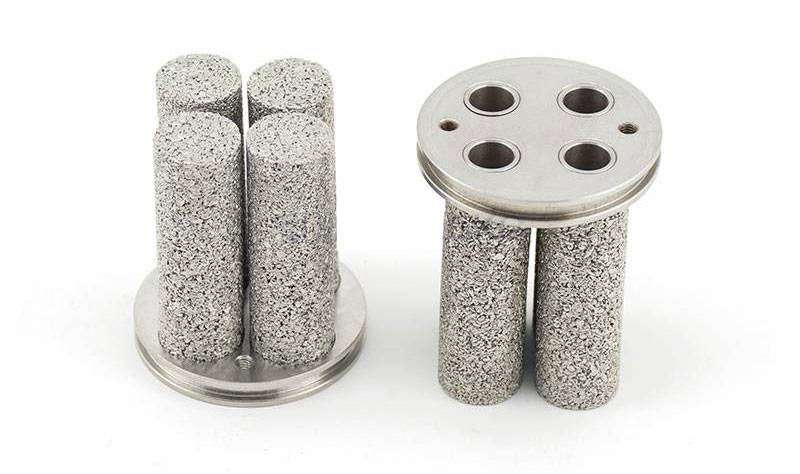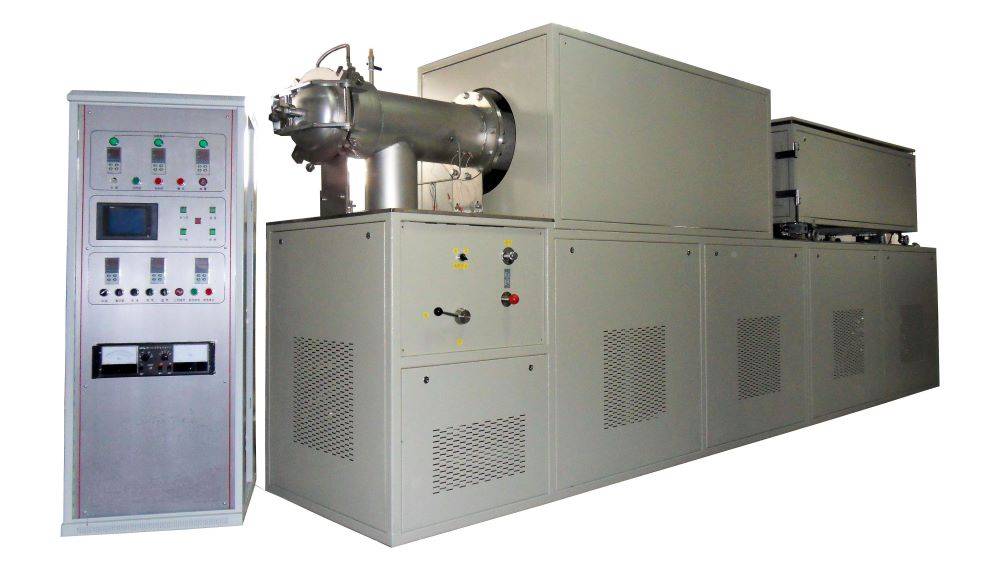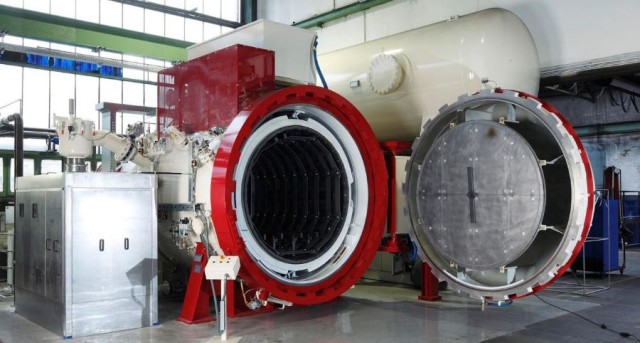Overview of Vacuum Sintering Furnace
Purpose and Features
The vacuum sintering furnace is a specialized piece of equipment designed to transform material powders into dense, high-performance blocks through a process known as sintering. This process occurs at elevated temperatures, typically ranging from 1000°C to 2000°C, depending on the material being processed. The primary objective of sintering is to enhance the physical and mechanical properties of the material, such as increasing its density, hardness, and strength.
One of the standout features of the vacuum sintering furnace is its ability to operate in a controlled, low-oxygen environment. This is achieved through the use of advanced vacuum technology, which effectively removes oxygen and other gases from the furnace chamber. The low-oxygen environment is crucial for several reasons:
- Preventing Oxidation: By minimizing oxygen levels, the furnace prevents the oxidation of sensitive materials, which can degrade their properties.
- Enhancing Material Integrity: The absence of oxygen helps in maintaining the purity and integrity of the sintered materials, leading to superior final products.
- Energy Efficiency: Operating in a vacuum reduces the need for additional protective atmospheres, making the process more energy-efficient.
The controlled environment also allows for precise temperature management, ensuring that the sintering process is uniform and consistent. This precision is essential for achieving the desired material properties, which are critical for applications in high-performance ceramics, metals, alloys, and ceramic-metal composites.
Applications
The vacuum sintering furnace is indispensable in the production of advanced materials, particularly in the realm of high-performance ceramics, metals, alloys, and ceramic-metal composites. These materials are crucial in various industries due to their superior mechanical, thermal, and electrical properties.
High-Performance Ceramics
High-performance ceramics, such as silicon carbide and alumina, are synthesized using vacuum sintering. This process not only enhances their density and hardness but also improves their resistance to wear, corrosion, and extreme temperatures. These properties make them ideal for applications in cutting tools, aerospace components, and high-temperature reactors.
Metals and Alloys
Metals and alloys, including titanium and nickel-based superalloys, benefit significantly from vacuum sintering. This method refines their microstructure, leading to increased strength and ductility. Consequently, they are widely used in the automotive and aerospace industries, where durability and performance are paramount.

Ceramic-Metal Composites
Ceramic-metal composites combine the best attributes of both materials, offering a unique blend of strength and toughness. Vacuum sintering plays a pivotal role in creating these composites, ensuring a homogeneous distribution of phases and superior mechanical properties. Applications range from armor plating to biomedical implants.
In summary, the vacuum sintering furnace is a cornerstone in the development of advanced materials, enabling the creation of components that push the boundaries of what is possible in various industrial and technological fields.
Key Components and Their Functions
Heating Chamber
The heating chamber is a critical component of the vacuum sintering furnace, playing a pivotal role in the sintering process. This chamber is designed to provide the precise and consistent heat required to transform material powders into dense, high-performance blocks. The sintering process, which occurs at elevated temperatures, significantly enhances the material's properties, such as density, hardness, and strength.
To ensure optimal temperature control and safety, the heating chamber is equipped with a sophisticated multi-layer temperature control system. This system allows for fine-tuning of the heating parameters, ensuring that the materials receive the exact amount of heat needed for successful sintering. Additionally, the chamber includes an advanced alarm system that monitors for any temperature anomalies. This feature is crucial for maintaining the integrity of the sintering process and preventing potential equipment damage or material degradation.
The combination of precise temperature control and robust safety mechanisms makes the heating chamber an indispensable part of the vacuum sintering furnace, ensuring that the sintering process is both efficient and reliable.
Insulation Screen
The insulation screen within a vacuum sintering furnace plays a pivotal role in maintaining the integrity and efficiency of the sintering process. This component is designed to isolate the internal heat generated during sintering from the external environment, thereby ensuring both safety and energy efficiency. The insulation screen is constructed with a multi-layer structure, each layer contributing to its overall effectiveness.
One of the key features of the insulation screen is its ability to maintain a vacuum state. By doing so, it minimizes heat loss and prevents any external air from entering the furnace, which could compromise the sintering process. The vacuum state also helps in maintaining a consistent temperature within the heating chamber, which is crucial for achieving the desired material properties.
The multi-layer structure of the insulation screen is composed of materials that are highly resistant to heat and capable of withstanding extreme temperatures. This design ensures that the screen can effectively contain the high temperatures generated during the sintering process, while also providing a barrier against external heat transfer. The layers are strategically arranged to maximize thermal insulation, thereby enhancing the overall energy efficiency of the furnace.
In summary, the insulation screen is an essential component that not only ensures the safety of the sintering process but also contributes significantly to its energy efficiency. Its multi-layer structure and vacuum-maintaining capabilities make it a critical element in the successful operation of a vacuum sintering furnace.
Low Temperature Cold Trap
The low temperature cold trap is an essential component in the vacuum sintering furnace, designed to remove residual air and ensure a high-quality vacuum environment. Positioned strategically before the vacuum pump, this device forces the airstream through its mechanism, effectively trapping and condensing vapors that could otherwise contaminate the system.
The cold trap operates by maintaining a chilled surface, typically made of stainless steel or glass, where vapors can condense or sublimate. The choice of material, particularly glass, is crucial when chemical resistance is a priority. Cooling is achieved through various methods, including the use of dry ice, liquid nitrogen, or Peltier elements, ensuring rapid temperature reduction and stabilization.

Once the furnace chamber has been evacuated of most condensable vapors, usually to a pressure of less than one millitorr, the cold trap is filled. This process not only helps in maintaining the vacuum but also prevents oil vapors from the vacuum pump from backstreaming into the chamber, thereby safeguarding the integrity of the sample and preventing product contamination.
In summary, the low temperature cold trap plays a pivotal role in maintaining the purity and efficiency of the vacuum sintering process, ensuring that the furnace operates in an optimal vacuum environment while protecting sensitive components from contamination.
Vacuum Measurement
Vacuum measurement is a critical function within the vacuum sintering furnace, playing a pivotal role in maintaining the integrity and efficiency of the sintering process. This system is designed to continuously monitor and assess the furnace's operational state, ensuring that all readings are precise and reliable, even in the face of potential errors.
One of the key technologies employed in vacuum measurement is micro-computer technology. This advanced system significantly reduces the need for manual intervention, thereby minimizing human errors. By automating the measurement process, micro-computer technology ensures that data collection is both accurate and consistent, contributing to the overall reliability of the sintering operation.
Moreover, the integration of micro-computer technology into vacuum measurement enhances the furnace's operational efficiency. It allows for real-time data analysis and immediate corrective actions if any discrepancies are detected. This proactive approach not only maintains the quality of the sintering process but also extends the lifespan of the furnace components, ultimately leading to cost savings and improved productivity.
In summary, vacuum measurement, powered by micro-computer technology, is essential for maintaining the precise and error-free operation of the vacuum sintering furnace. This system's ability to reduce manual work and human errors ensures that the furnace operates at peak performance, supporting the production of high-quality sintered materials.
Related Products
- Vacuum Heat Treat and Pressure Sintering Furnace for High Temperature Applications
- Vacuum Hot Press Furnace Heated Vacuum Press Machine Tube Furnace
- Vacuum Hot Press Furnace Machine Heated Vacuum Press
- Small Vacuum Heat Treat and Tungsten Wire Sintering Furnace
- Vacuum Dental Porcelain Sintering Furnace
Related Articles
- How Vacuum Induction Melting (VIM) Transforms High-Performance Alloy Production
- How Vacuum Induction Melting Ensures Unmatched Reliability in Critical Industries
- Mastering Vacuum Furnace Brazing: Techniques, Applications, and Advantages
- Vacuum Hot Press Furnace: A Comprehensive Guide
- The Ultimate Guide to Vacuum Pressure Sintering Furnace: Benefits, Applications, and Working Principle





















